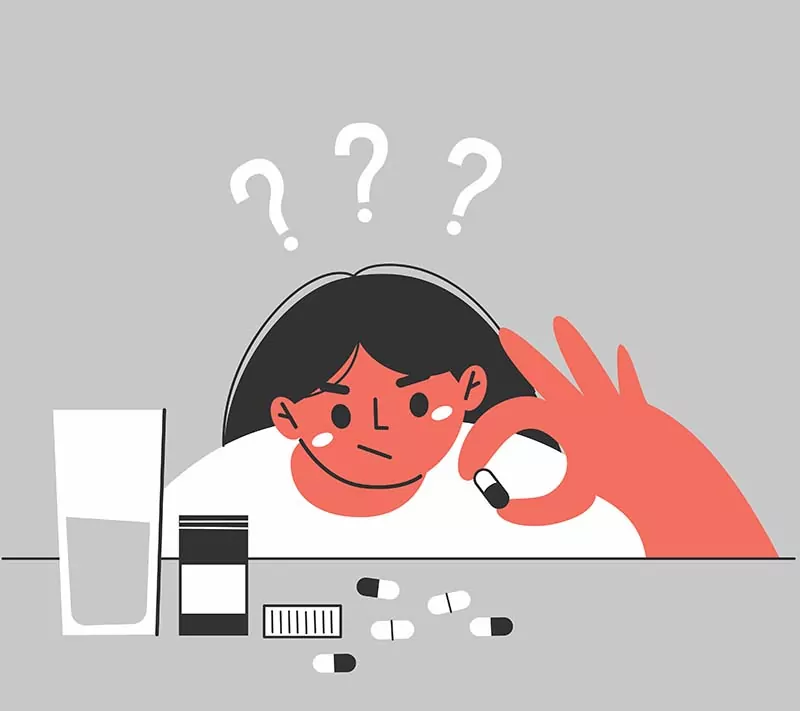Methadone is one of the most common medications used for Medication Assisted Treatment (MAT) for Opioid Use Disorder (OUD). However, methadone is not the best choice for everyone. Switching from methadone to a buprenorphine treatment program could be an alternative to treat your OUD in the following cases:
At Eleanor Health, our MAT program for opioids includes different forms of buprenorphine, like Suboxone and Zubsolv. Combined with our other virtual addiction treatment services, buprenorphine represents a more flexible and convenient option for people in recovery.
Methadone and buprenorphine are commonly used in medication-assisted treatment (MAT) for opioid addiction. They work well when included in a complete care plan for people in recovery. However, the way each medication works and how it is administered play a major role in how people react to treatment.
In general, methadone is valued for its reliability and social support system, and buprenorphine is coveted for its flexibility, low overdose risk and milder withdrawal symptoms.

For decades, methadone has been the gold standard for treating opioid dependence. When taken as prescribed, methadone helps alleviate withdrawal symptoms and cravings associated with opioid addiction.
Methadone is a synthetic opioid used primarily for pain management and as part of a treatment program for opioid use disorder. Methadone is provided at clinics, requiring daily appointments during the first months of treatment. Methadone clinics offer a structured environment for individuals seeking recovery, as they provide counseling and support groups on top of regular dosing.
However, the in-person nature of methadone treatment and the clinic’s schedule can be inconvenient, especially when it clashes with work schedules and family life. People living outside urban areas might also struggle to commit to and from the clinic.
Because methadone is still an opioid medication, it can be abused or lead to addiction if not taken as prescribed. Methadone withdrawal can also be harder and longer than withdrawal from other opioids. These medicinal and logistical challenges of methadone represent a drawback that leads some individuals to search for an alternative treatment.
In recent years, buprenorphine has emerged as a viable alternative to methadone for the treatment of opioid dependence. One of the biggest advantages of buprenorphine is that it can be taken at home, unlike methadone. This makes it easier for people in recovery to combine treatment with work and family schedules, and does not require visits to a clinic, which can be an issue for many because of personal or logistical challenges.
Buprenorphine also has a unique advantage over methadone, which is its “ceiling effect”. After a certain dose, taking more buprenorphine does not increase its effects. This lowers the risk of overdose and serious side effects, like respiratory depression, significantly. Buprenorphine is also associated with milder withdrawal symptoms than methadone.
Buprenorphine is a partial opioid agonist, meaning it activates the same receptors in the brain as opioids, but to a lesser degree. This unique property makes it an effective medication for treating opioid dependence while reducing the risk of respiratory depression and overdose associated with full opioid agonists like methadone.
Buprenorphine works by attaching to the same receptors in the brain that are targeted by opioids like heroin, prescription painkillers, and methadone. The ceiling effect reduces the risk of overdose associated with methadone. Buprenorphine also has a long-lasting effect, allowing for less frequent dosing compared to methadone.
When taken as prescribed, buprenorphine can:
The U.S. Food and Drug Administration (FDA) has approved several buprenorphine products for the treatment of opioid dependence, including:
A common form of buprenorphine is a sublingual film known as Suboxone. The film works by placing it under the tongue and waiting for it to dissolve. In addition to buprenorphine, Suboxone also contains naloxone, an opioid blocker. When taken as prescribed (sublingually), naloxone remains inactive and does not affect the user.
However, if someone attempts to misuse Suboxone by injecting it, naloxone will block the euphoric effects of opioids, which can precipitate withdrawal symptoms.
Subutex are sublingual tablets that contain only buprenorphine. This method allows for quick absorption into the bloodstream, bringing faster relief for cravings and withdrawal symptoms from opioids. In addition to bringing faster relief, the main benefit of Subutex is that it maintains a stable level of medication in the body, which helps patients manage their addiction more effectively.
Zubsolv is another buprenorphine/naloxone combination product. Zubsolv is a sublingual tablet designed to dissolve more rapidly than Suboxone, potentially improving absorption and patient convenience.
Bunavil is buccal buprenorphine film placed between the gum and cheek, allowing the medication to be absorbed through the mucous membranes in the mouth. This form also includes naloxone and offers similar benefits regarding misuse prevention and managing opioid cravings.
Sublocade is an extended-release injection that provides a long-lasting form of buprenorphine. This injection can last for a month or longer, making it an excellent option for patients who prefer not to take daily medication. The benefit of this form is that it ensures consistent medication levels in the body, which can help stabilize patients in their recovery journey. The injection must be administered by a healthcare provider.
Another long-term buprenorphine treatment is Probuphine, a buprenorphine implant. These implants release a steady dose of buprenorphine over several months, reducing the need for daily dosing and helping patients maintain their recovery without the hassle of daily medication. Probuphine must be inserted under the skin by a healthcare provider.
The decision to switch from methadone to buprenorphine should be made in consultation with a healthcare professional. Both medications have their advantages and downsides, and the choice depends on individual circumstances and preferences.
Here are some additional factors to consider when comparing buprenorphine vs methadone:

Both methadone and buprenorphine can cause side effects, such as constipation, sweating, and sleep disturbances. However, the specific side effects may vary from person to person, and some individuals may tolerate one medication better than the other.
The cost of treatment and insurance coverage can also be a factor in the decision-making process. Eleanor Health works with many major insurance plans to make it easier for our members to access a buprenorphine treatment. We accept Aetna, Wellpoint, Blue Cross Blue Shield, Medicaid, and United Healthcare. Verify your insurance and discuss your options with our team to get started with treatment.


Your personal treatment goals and preferences should be considered. Some individuals prefer the structured environment of a methadone clinic, with its regular counseling and support services. However many people value the flexibility and privacy of at-home buprenorphine treatment. The latter is also more convenient for patients who prefer virtual addiction treatment.
Both methadone and buprenorphine are efficient medications to alleviate withdrawal symptoms and cravings. However, buprenorphine is generally considered a more accessible, convenient and safer option for many.
If you are considering switching from methadone to buprenorphine, the recovery specialists at Eleanor Health can help you.